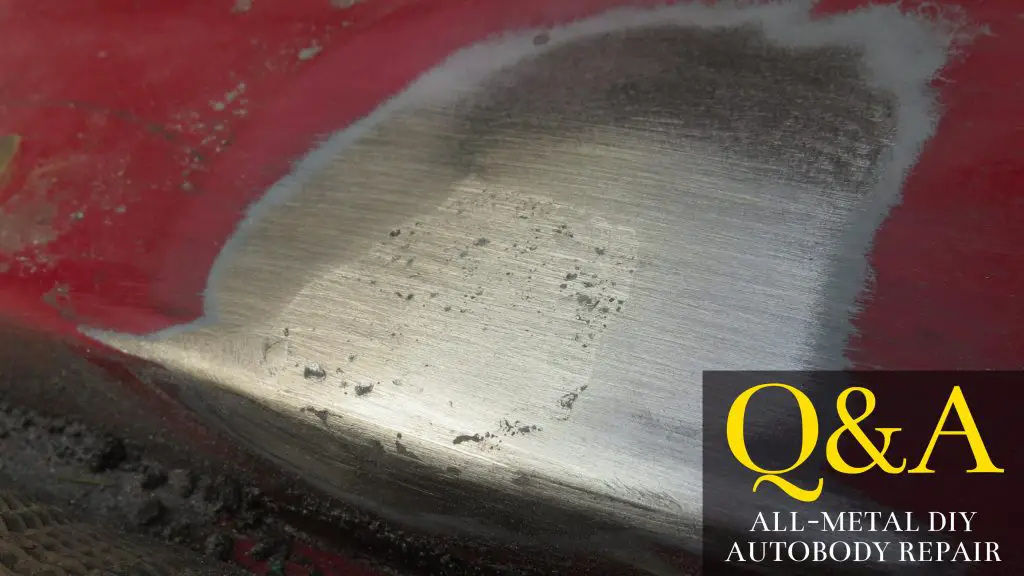 A reader asks . . . Q: What’s the best way to fix rust holes in the cab of my pickup truck? I’m handy around the house, so I figure I can learn to do decent autobody work in my driveway. I don’t need perfect results, but I’m tired of living with rust holes and don’t have the money for a new vehicle.
A reader asks . . . Q: What’s the best way to fix rust holes in the cab of my pickup truck? I’m handy around the house, so I figure I can learn to do decent autobody work in my driveway. I don’t need perfect results, but I’m tired of living with rust holes and don’t have the money for a new vehicle.
 A: I did my first driveway autobody work in 1986, and since then I’ve settled on an unusual approach for filling holes that works exceptionally well. The process is pretty simple on paper . . . grind back to sound metal, fill the hole with something, smooth the “something”, prime then paint. Conventional autobody compound is what’s usually used for filling holes, but there’s a problem. Rust loves to start up again around hardened autobody compound. I get better results in less time using solder instead. This is an old technique that uses a propane torch to heat the metal and melt the solder. Hardened solder is soft enough to shape easily, yet hard enough to create a really good, all-metal repair that does not promote peripheral rust the way bondo does.
A: I did my first driveway autobody work in 1986, and since then I’ve settled on an unusual approach for filling holes that works exceptionally well. The process is pretty simple on paper . . . grind back to sound metal, fill the hole with something, smooth the “something”, prime then paint. Conventional autobody compound is what’s usually used for filling holes, but there’s a problem. Rust loves to start up again around hardened autobody compound. I get better results in less time using solder instead. This is an old technique that uses a propane torch to heat the metal and melt the solder. Hardened solder is soft enough to shape easily, yet hard enough to create a really good, all-metal repair that does not promote peripheral rust the way bondo does.
Every hardware store carries lead-free solder that works well for this job. I remove the rust and paint from the affected area with an ordinary 5” random orbit sander (the same one I use for woodworking and home improvements), install some backing material to cover the hole if it’s larger than 1/4” in diameter, then build up a layer of solder on the metal of the auto body and the backing material. If there’s another layer of inner metal behind the hole you’re filling, stuff the space with a copper scouring pad to create the necessary backing. Solder sticks very well to this. If the hole is open and large, use sheet metal to create backing. Either way, you want to heat the solder just enough to bond to the surface of the body and backing, but not so much that it runs off. It’s a fine line and takes some practice. Build up enough solder so the entire repair area is higher than the surrounding body metal. The area will look ugly at this stage (very ugly), but that’s okay. Use a grinder and sander to work the solder down level and smooth.
You can get excellent results with this technique, and the patched area resists rust much better than if it was filled with regular autobody compound. There’s more to driveway autobody work than just patching, of course, but you can watch my solder-based technique here to see how it works on my truck floor. Need tips on painting and buffing vehicle paint in your driveway? Click here for a video tour.



